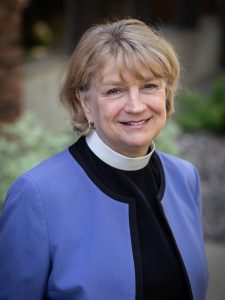 By Bishop Ann Svennungsen
By Bishop Ann Svennungsen
Parker Palmer calls himself a “contemplative by catastrophe,” writing “I’m most likely to go deep only when I slam into a wall or fall off a cliff.” I might speak about myself in a similar way. You might as well.
For me, the practices of prayer and meditation have received uneven attention throughout my life. I’ve worked with spiritual directors, practiced Lectio Divina and daily journaling, participated in weekly prayer groups. In part, that variety reflects a hope that a brand new prayer practice will help me become more disciplined. It hasn’t always worked.
“We feel guilty that we pray only when ‘catastrophe strikes,’ so we wonder why God would listen to us at other times.”
Roberta Bondi, a devoted student of the monastic mothers and fathers, encourages beginners to include three things as they learn to pray: scripture (the psalms especially), conversation with God where “you really speak your mind,” and silence (simply sitting in God’s presence). Start with ten minutes a day – no more. Nothing, she writes, “derails prayer faster than starting with some … noble idea of what it ought to be. … [A] lot of prayer is just a matter of showing up.”
And yet, sometimes even “showing up” is a challenge. We feel guilty that we pray only when “catastrophe strikes,” so we wonder why God would listen to us at other times. We enter prayer feeling a deep sense of duty, seeing prayer as another “should” on our “to do” list. Flourishing relationships are rarely formed by duty alone. Or, we struggle deeply with doubt and despair, and wonder if God will show up when we do.
WHERE DO YOU find yourself in your life of prayer? How has COVID-19 affected you? Do you have spaces for support (or accountability) when it comes to spiritual practices?
Each year the rostered leaders are expected/encouraged to attend a three-day collegial gathering to enhance their spiritual and intellectual lives, called the Bishop’s Theological Conference. The theme of this year’s conference is “Faithful Resilience.” One of our foci will be spiritual resilience – exploring the practices of prayer that strengthen our relationship with God and sustain our resiliency. (Ask your rostered leader about it when they return on September 28!)
“A good friend begins her prayer time by first placing herself in the picture of Jesus talking with the woman at the well.”
With gratitude for a grant awarded by the Lilly Endowment, the Minneapolis Area Synod will be starting with three cohorts of members of synod churches that will delve into “faith practices” and “neighboring practices” that can ground congregations and members in their baptismal vocation. The 15 participating churches in this first two-year cohort will be able to experiment with practices at home and in their neighborhood and learn together from their experiences. Participation in these cohorts is a real opportunity for renewal and imagination, personally and communally. (The second set of cohorts will begin in the summer of 2023; is your congregation interested?)
A good friend begins her prayer time by first placing herself in the picture of Jesus talking with the woman at the well. Perhaps, one might imagine themselves in the picture of the prodigal son returning home. Both are pictures of radical grace. And, maybe that’s the most important thing of all about prayer: No matter how often, how well, or how disciplined we are in prayer, it is the God of grace who meets us there.

